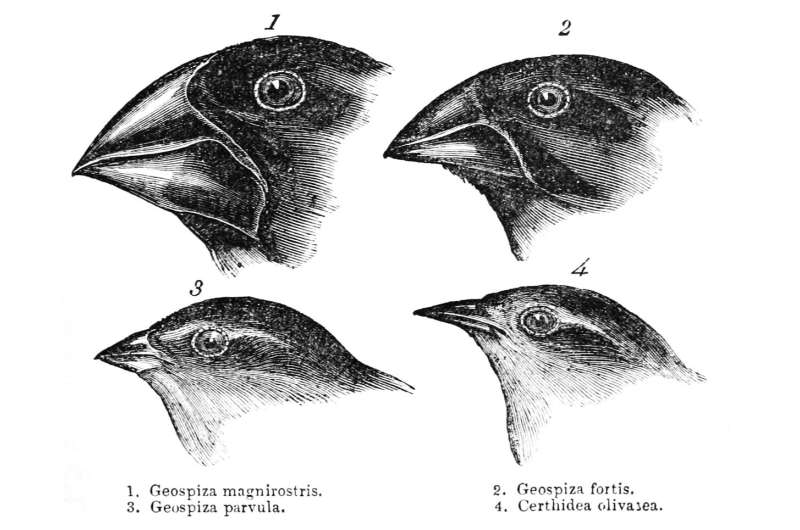This article has been reviewed according to Science X's editorial process and policies. Editors have highlighted the following attributes while ensuring the content's credibility:
fact-checked
peer-reviewed publication
trusted source
proofread
New research shows microevolution can be used to predict how evolution works on much longer timescales

Ever since Charles Darwin published his landmark theory of how species evolve, biologists have been fascinated with the intricate mechanisms that make evolution possible.
Can mechanisms responsible for the evolution of a species over a few generations, called microevolution, also explain how species evolve over periods of time extending to thousands or millions of generations, also called macroevolution?
A new paper, just published in Science, shows that the ability of populations to evolve and adapt over a few generations, called evolvability, effectively helps us understand how evolution works on much longer timescales.
By compiling and analyzing huge datasets from existing species as well as from fossils, the researchers were able to show that the evolvability responsible for microevolution of many different traits predicts the amount of change observed between populations and species separated by up to one million years.
"Darwin suggested that species gradually evolve, but what we found is that even though populations rapidly evolve over the short term, this (short-term) evolution doesn't accumulate over time. However, how divergent populations and species are, on average, over long periods of time still depends on their ability to evolve on the short term," said Christophe Pélabon, a professor at NTNU's Department of Biology and senior author of the paper.
Big datasets from living creatures and fossils
The ability to respond to selection and to adapt, the evolvability, depends on the amount of heritable (genetic) variation. The researchers conducted their analysis by first compiling a massive dataset with measures of evolvability for living populations and species from publicly available information. They then plotted evolvablity against population and species divergence for different traits such as [bird] beak size, number of offspring, [plant] flower size and more.
They also examined information from 150 different lineages of fossils, where other researchers had measured differences in morphological traits in the fossils over time periods as short as 10 years and as long as 7.6 million years.
What they saw was that traits with higher evolvability were more divergent among existing populations and species, and that traits with higher evolvability were more likely to be different from each other between two consecutive fossil samples.
Conversely, traits with little evolvability or little variability didn't change very much between populations or between successive fossil samples
Environmental fluctuation is the key
Traits with higher evolvability change rapidly because they are able to respond to environmental changes more quickly, Pélabon said.
The environment—things such as temperature, the type of food available, or any other characteristic important for the survival and the reproduction of the individual—is the driving force of evolutionary changes because populations try to adapt to their own environment. Typically, environments are changing from year to year or decade to decade, fluctuating around stable means. This generates fluctuation in the direction of selection.
Highly evolvable traits can rapidly respond to these fluctuations in selection and will fluctuate over time with high amplitude. Traits with little evolvability will also fluctuate but more slowly and thus with lower amplitude.
"Populations or species that are geographically distant from each other are exposed to environments whose fluctuations are not synchronized. Consequently, these populations will have different trait values, and the size of this difference will depend on the amplitude of the trait's fluctuation, and therefore on the evolvability of the trait," Pélabon said.
Consequences for biodiversity
The researchers' results suggest that selection and therefore the environment has been relatively stable in the past. With climate change, things are rapidly changing, and mostly in one direction. This may strongly affect patterns of selection and how species can adapt to environments that are still fluctuating but around optima that are no longer stable even over periods of time of a few decades.
"How much species will be able to track these optima and adapt is uncertain, but most likely this will have consequences for biodiversity, even on a short timescale," he said.
More information: Agnes Holstad et al, Evolvability predicts macroevolution under fluctuating selection, Science (2024). DOI: 10.1126/science.adi8722
Journal information: Science
Provided by Norwegian University of Science and Technology




















